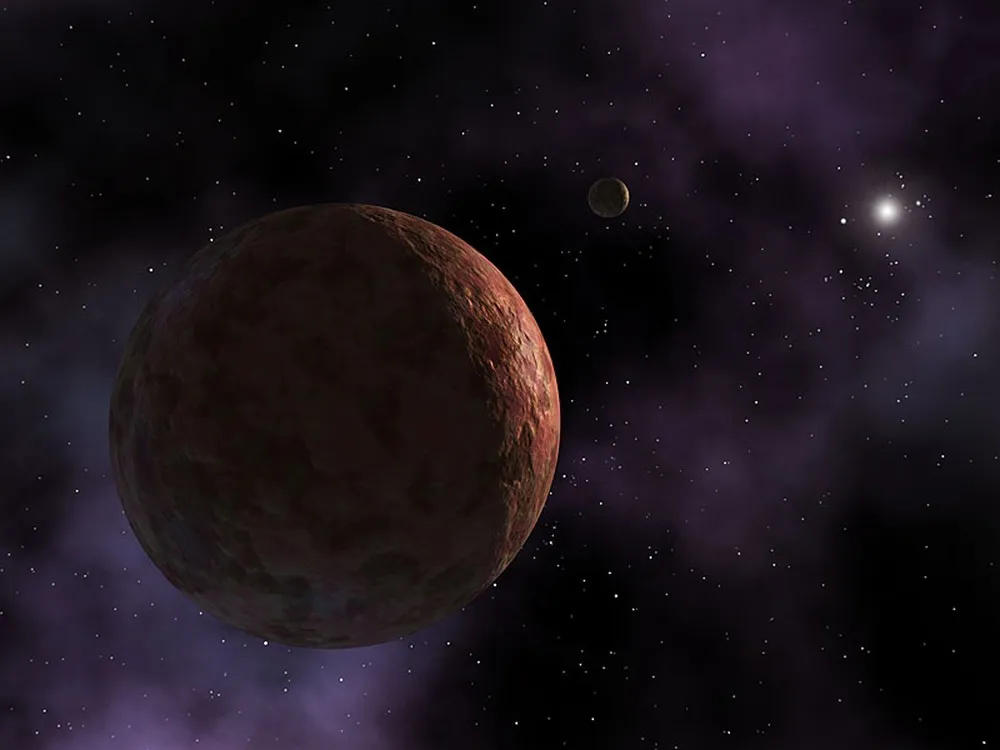|
A newly discovered planet-like object, dubbed “Sedna” is seen in this artist's concept released by NASA March 26, 2014. Astronomers have found a small icy body far beyond Pluto and the Kuiper Belt, a discovery that calls into question exactly what was going on during the early days of the solar system. The diminutive world, provisionally called 2012 VP113 by the international Minor Planet Center, is estimated to be about 450 kilometers (280 miles) in diameter – one-eighth the width of the moon and less than half the size of a neighboring dwarf planet named Sedna, which was discovered a decade ago. By comparison, Earth is about 12,700 kilometers (7,900 miles) across. Unlike red and shiny Sedna, the newfound object is pinker and much fainter, which made it hard to detect. Its pink tinge comes from ice, methane and carbon dioxide that have been damaged by radiation. Sedna and VP are the first objects found in a region of the solar system that previously was believed to be devoid of planetary bodies. The no man’s land extends from the outer edge of the Kuiper Belt, home to the dwarf planet Pluto and more than 1,000 other small icy bodies, to the Oort cloud, which orbits the sun some 10,000 times farther away than Earth’s average of 150 million kilometers (93 million miles). The inner Oort cloud is where some comets such as the sun-diving Comet ISON are thought to originate. ISON broke apart late last year after brushing too close to the sun. (Photo by Reuters/NASA/JPL-Caltech)
|

